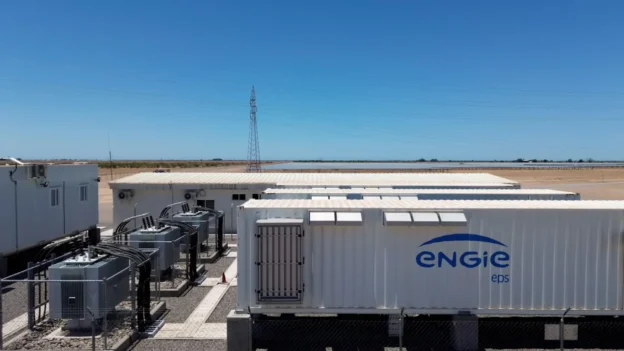Electric energy storage has become a crucial component in the transition to more sustainable, reliable and efficient energy systems. In Mexico, this concept has taken on greater relevance with the approval of the general administrative provisions for the integration of electric energy storage systems into the National Electric System (SEN) by the Energy Regulatory Commission (CRE). This regulatory framework establishes the conditions and modalities under which energy storage systems (ESS) may be integrated into the SEN, thus providing a clear framework for the development of this technology in the country.
Electrical storage potential in Mexico
Thanks to the country’s geographical conditions, Mexico has great potential for solar and wind energy, which makes it an ideal candidate for the implementation of energy storage systems to help manage the intermittency of these sources. The integration of energy storage systems will contribute to improve the efficiency and reliability of the National Electric System, allowing a greater penetration of renewable energies.
The Indicative Program for the Installation and Retirement of Power Plants (PIIRCE), contained in the National Electric System Development Program (PRODESEN) 2022-2036, projects that by that period some 4,505 MW of energy storage systems could be installed in the country. This reflects a significant commitment to strengthening Mexico’s energy infrastructure, aimed at improving the stability and efficiency of the national electricity system, where battery storage technology will play a crucial role in accelerating the transition to a more sustainable energy future.
Latin American energy storage landscape
Compared to other Latin American countries, Mexico is in a favorable position due to its abundance of solar and wind resources. However, countries such as Chile and Peru have also made significant progress in the implementation of energy storage systems.
Chile, for example, has taken an important step towards decarbonization with the commercial operation of BESS Coya, the largest energy storage battery farm in Latin America to date. This battery storage system has an installed capacity of 139 MW/638 MWh and stores the energy generated by the Coya Solar Plant. In addition, ENGIE Chile has announced the construction of two additional projects: BESS Tamaya (68 MW/418 MWh) and BESS Capricornio (48 MW/264 MWh), demonstrating the country’s commitment to the energy transition.
On the other hand, in Peru, ENGIE Energía Perú presented the Energy Storage System with Batteries -CHILCA BESS-, which has an installed capacity of 26.5 MW, making it the largest of its kind in the country. This system is located in the facilities of the ChilcaUno Thermoelectric Power Plant and provides the mandatory service of Primary Frequency Regulation (RPF) required by the electrical system.
Challenges and opportunities of electric storage in Mexico
In Mexico, the private sector has been working on the consolidation of proposals and observations on the regulation of energy storage with the various authorities, seeking to include suggestions for adaptation to standardize the regulation of BESS with the current regulatory framework and specific proposals to shorten implementation deadlines.

Elements that promote a just energy transition
Electricity transmission infrastructure plays a key role in the transition to a more sustainable and fairer energy matrix. Without a robust and expanded transmission grid, the potential of renewable energies cannot be fully exploited, as it is essential to transport energy generated in remote locations – such as wind and solar farms – to urban consumption centers where it is needed, mitigating intermittency.
Energy storage and transmission
An efficient transmission grid makes it possible to effectively integrate storage technologies, which are crucial for managing the intermittency of renewable energies. The development of transmission infrastructure thus becomes an indispensable pillar to ensure that the energy transition is not only technically and economically feasible, but also equitable and accessible to all.
That is why we say that without transmission, there is no transition, so it is time to work in synergy with all stakeholders in the energy sector to ensure that the implementation of this type of technology is efficient. From policy makers and regulators, to infrastructure developers and technology providers, every stakeholder has an essential role to play in creating an efficient and affordable grid for everyone.
In summary, electrical energy storage in Mexico and other Latin American countries is in a phase of growth and development. The implementation of energy storage systems is essential to improve the efficiency and reliability of electricity systems, allowing a greater penetration of renewable energies.
This article was developed by Ana Ludlow and published as part of the fourth edition of Inspenet Brief magazine December 2024, dedicated to technical content in the energy and industrial sector.

